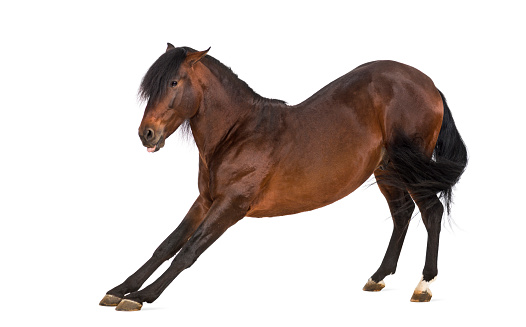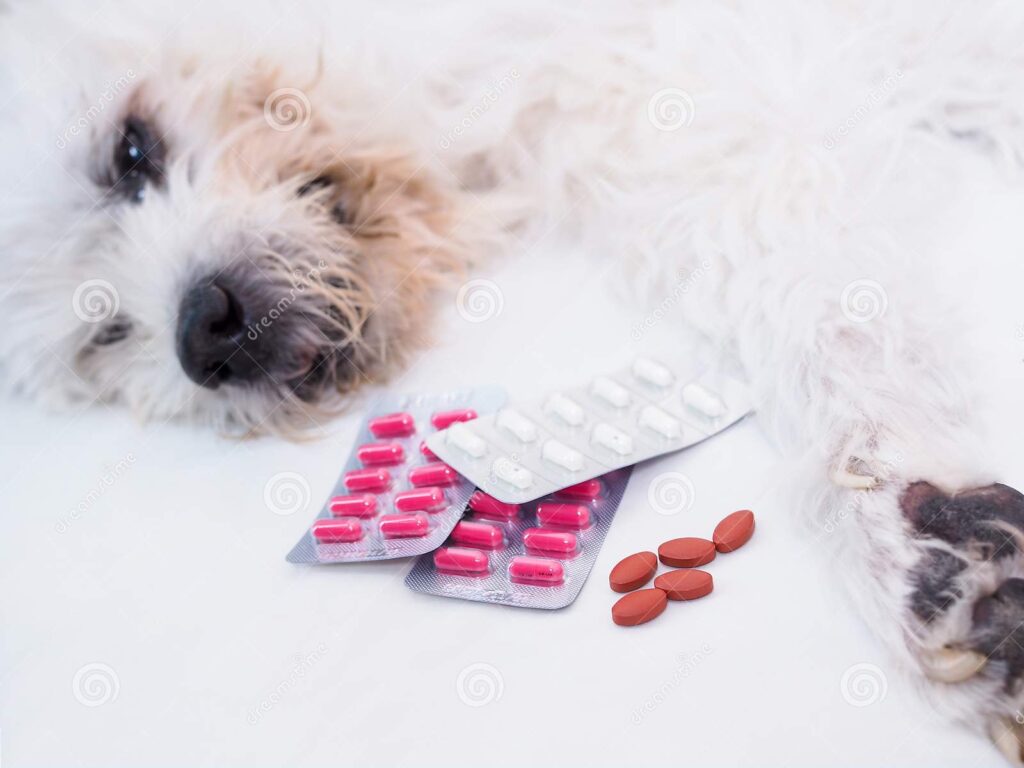Pain can be really hard to distinguish. Especially when it is mild, and when it is in an animal that uses totally different “language” to us! Additionally, different types of pain, such as visceral (internal organ) and musculoskeletal (muscles, bones and joints), and whether it is acute or chronic, can have different signs. However it is our duty as owners to try and establish when our animal is in pain, so we can act accordingly. So I am making a very simple easy to follow list of signs to help you know what is a sign of pain! This is NOT an exhaustive list, you should contact a vet if your animal is performing any abnormal behaviours. And I am not including the obvious physical indicators of a cut or hot and swollen area!
Dogs
Dogs are “predators” when you consider their innate instincts, and are pack animals, which can play a part in their pain signs.

- Licking and chewing an area – either of a specific area more consistently than normal, such as a toe, or just “of the air” so to speak when they are relaxing. This is because they are trying to “distract” and focus away from the pain. Licking or chewing a painful area can alter sensation of that area, stop pain signals and send sensory signals instead. Additionally it is their instinct to clean a wound to prevent infection, so even though there is no wound, their mind is telling them the pain needs “cleaning”.
- Air licking – can be performed when stressed or in visceral pain or feel nauseas, and is another distraction technique, it can release endorphins to reduce pain and make them feel calmer as they are performing their innate behaviour to “soothe” an area, despite not being able to lick the physical area.
- Excessive panting/ panting for no reason – when a body is in pain, it wants to try and “fix” an area and can go in overdrive, panting is them trying to get oxygen to aid the cells that are respiring more to try and “fix” whatever the issue is. It is also because the sympathetic nervous system (fight and flight) has taken over, telling them they are in trouble and need more oxygen to get away from danger. Therefore excessive panting/panting for no reason is always a cause for concern.
- Posture changes – broad topic, but any signs from as obvious as holding one leg up, to as simple as sitting like a coach potato rather than a typical “dog sit”, can be pain signs, so seek vet or physio advice.
- Mobility changes – it doesn’t always have to be as obvious as them holding a limb up and refusing to walk on it! Mis-stepping more than usual, hesitation for previous usual tasks like climbing stairs, or jumping on the sofa, slowing down, or equally speeding up! “Bunny hopping” movements could be due to 1 leg hurting so counterbalancing with the other, “skipping” in their gate can be joint issues….the list goes on. Also, a dog that chooses to trot everywhere may be doing so as walking hurts (as this uses more muscular effort and joint range of motion), so check that they can actually physically walk…so any changes in movement, or even movement that you have always thought is “normal”, but you realise is different to other dogs, see your vet.
- Shaking – this is quite an obvious one! But we shake when we are scared, this is our sympathetic nervous system in overdrive, with adrenalin soaring through the body, and the body just wanting to relax!! So if they are shaking (and it isn’t cold!)…see your vet asap!
- Vocalising or a lack of – many people say their dog is not in pain as they are not “vocalising”….dogs rarely do unless in a sudden traumatic event when the pain is caused! What is more common is a previously loud and happy dog, becoming quiet…
- Behavioural changes – this can be a very long list, as every dog is different, but if your dog is previously boisterous and loud, and becomes calm and reserved, or if they are previously happy and loving and become aggressive…these are all HUGE indicators something isn’t right! As dogs are pack animals, they can want to come to you for comfort which can be a sign, or equally can suddenly want to stay away from you as they are worried about their pain.
- Urinating / defecating more often or at inappropriate times – this is a sign of lack of control and severe stress or pain, so best to seek vet advice straight away for this!
- Flinching – if they “flinch” when you go to touch them, or try to evade your touch, or get agitated by it, they are probably in pain somewhere!
There is a lot more I could add, but the list would be endless! The key message is pay attention to your dog every day…know what is “normal” for them, but equally compare them to other dogs, are they moving in a way others don’t? If so, get advice from a vet or physio! Equally, do not assume because they aren’t yelping, or that they are still eating they are fine…their desire for self preservation does not mean they are not in pain…as there are different types of pain, they can have different signs. So if you notice anything like the signs above, or anything else you notice as abnormal, seek vet attention!
Horses
Horses are prey animals, meaning they do not want to show pain or they might get eaten…so their signs can be quite subtle sometimes!

- Licking and chewing – in horses this has been shown to release endorphins, calming them, as they are trickle feeders and constantly chewing, it distracts them from pain, so if your horse is licking and chewing whilst not eating, they could be in pain or stressed!
- Excessive rolling / pawing at the ground – This is a real telling sign they have visceral pain and are agitated about it, so usually best to get a vet quite quickly. If they are still defecating/urinating normally, it is less urgent, but always best to speak to a vet
- Lack of faeces – this again for horses is quite worrying, they usually have around 8-12 poos per night, so if one night you don’t see any in the stable, it could be a sign something is quite wrong!
- Posture changes – this can be as simple as resting their back legs on their bedding…or weight shifting more often behind, to as complex as not wanting to stand up. Any change or something abnormal compared to other horses warrants a vet/physio discussion. One obvious rule though is horses should not want to rest a front leg!
- Movement changes – some signs are super subtle, some are obvious (like a head nob lameness), but ridden behaviour changes, bucking more, being slow or lethargic, tripping, fence refusal, tail swishing during movement, are all signs. Equally not wanting to canter at all or on one rein, or not wanting to move at all, are all different levels of pain and discomfort. When we ride our horses it is imperative for regular physio checks to notice signs early!
- Behavioural changes – they link to a lot of the above, but simple management things also need considering, like if they swish their tail and put their ears back when being groomed, do they stamp their feet being tacked up, or did they used to greet you at the stable and now seem depressed by your presence?! Horses are stoic due to being prey animals, so really try to learn your horses “personality” to tell when something isn’t quite right.
- Excessive aggression – horses are not usually “aggy” for no reason. Yes they may be tired and not want a ride that morning, but trying to kick you just for putting a head collar on, or trying to bite you for coming near them, is usually a sign something more serious is going on…
- Lack of appetite – horses are trickle feeders so need to be eating all the time, so you don’t always notice if they just start eating a little less, but if you do, or they are losing weight, it is a definite sign you ned vet attention.
- Sweating or muscle tremors – this can be a sign they are high in sympathetic nervous system activation, with adrenalin through their body, meaning something is going on! It may be a very exciting situation, or stress or pain, so check the “world around you” to see what could be causing it, and get vet advice.
- Looking at an area – horses commonly do this for visceral pain, where they will “fling” their head round to look at their ribs or flank etc, trying to indicate the area of discomfort, so take the hint 😉
Again there is much more I could add, but the key message is to learn your horse and their personality, to keep a regular check on them, and to have regular vet and physio checks to pick up on signs early. A lot of us ride our horses, and unfortunately by the time we notice an issue it is often quite progressed because they are prey animals and don’t like to show fear and pain. So working with other paraprofessionals like saddlers, dentists and physios, can ensure your horse is getting the best care, and can pick up signs quickly for when you need to see your vet.
Obviously I could do cats and other animals also.,.so this is just a start, if you have anything to add, or any questions, please get in touch!

